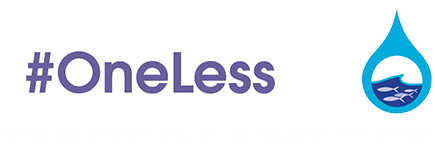Thames21

Londoners have a nasty habit. Cath Clarke finds out how the city got hooked on plastic.
When was the last time you drank water from a plastic bottle? How many do you get through a week? More than the city average of 3.37? In March, a report was sent to Sadiq Khan revealing London’s out-of-control throwawayplastic habit. It found that Londoners guzzle more plastic bottled water than people anywhere else in the UK but we’re pretty shonky at recycling (32 percent compared to the national average of 43 percent).
Why is that a problem? Watch the scary new documentary ‘A Plastic Ocean’ on Netflix, described by David Attenborough as ‘one of the most important films of our time’. It took eight years to make and investigates the ecological disaster being caused by plastic in the world’s oceans. The facts are shocking. Nearly every piece of plastic ever made still exists today in some form or other. Eight tons of the stuff ends up in the sea each year – that’s a rubbish truckful dumped every minute. By 2050 there will be more plastic than fish in the oceans.
On YouTube you can watch a Bryde’s whale dying on a beach, writhing in pain with six metres of plastic – including food packaging – knotted in its stomach.
To be honest, I watched ‘A Plastic Ocean’ a teeny bit smugly. At home I recycle. In the office, Time Out has filtered water. So that’s not my plastic killing the whale, right? Wrong, says Jo Ruxton, a producer on the film, who also worked on the BBC’s ‘Blue Planet’. She got the idea for ‘A Plastic Ocean’ after watching crews on wildlife films spending hours clearing up beaches to get money shots of turtles. Over 80 percent of ocean plastic comes from land-based sources, she tells me. And some of it may have started its journey in our recycling bags : ‘A lot of the plastic that we think is being recycled is sent to Asia for recycling.
But they only want a certain type of it, the valuable plastic. They have no infrastructure to deal with the rest. So a lot of the time it’s cast away, into rivers and canals, and out into the ocean.’ Science hasn’t yet worked out if there is a risk to human health from plastic in the seas. A plastic bottle takes 450 years to degrade and over time gets broken down into smaller and smaller fragments called microplastic, which are eaten by marine life. A study in 2014 found microplastics in oysters and mussels sold in supermarkets.
Toxic time bomb? Watch this space. In London there is a growing movement against throwaway plastic. At my local café, the E5 Bakehouse, owner Ben Mackinnon is looking around his kitchen trying to find an example of useonce plastic. It takes a while. There are jugs of water next to the coffee machine for customers. E5’s takeaway coffee cups and lids, soup containers, even the cutlery, are sourced from a company called Vegware, which makes eco-friendly compostable food packaging.
For Mackinnon, who worked as a sustainability advisor before retraining as a baker, it’s about being kind to the planet but also enjoying his coffee. ‘It really puts me off when I drink from polystyrene; it’s scratchy and a bit chemical-feeling.’ Takeaway coffee cups are not fantastic plastic.
In the UK we get through 7.1 million of them a day. Only 1 percent of them are recycled because most cups are lined with waterproof plastic – so you can’t put them in with paper recycling. At work, I get my morning coffee fix from Pret, which is wall-to-wall plastic but has recently started giving customers a 25p discount if they bring their own cup. (That’s nearly 100 quid a year if you’re on a one-a-day habit.) So I’ve bought a reusable cup for my daily dose. On the bar scene there is a movement against plastic straws. Many bars stopped using them after a video went viral a couple of years ago of a sea turtle getting a straw painfully extracted from its nose. In Hoxton, the kickass cocktailmakers at Super Lyan (formerly White Lyan) don’t use any throwaway plastic at all, and were among the first to take a hardline stance on straws. When you buy your first drink, you pay 25p and get a bamboo straw, Super Lyan’s business manager Iain Griffiths tells me. ‘We say to you: “It’s your straw for the rest of the night. Take it, keep it.” We want people to consider what the cost of a straw is.’
Elsewhere in the city, brilliant ZSL London Zoo is behind the #OneLess campaign to rid London of single-use plastic water bottles by 2021.Fiona Llewellyn, the marine project manager, tells me that at the zoo they talk about the city as Londonon-Sea: ‘We’re on the Thames, and everything that we put in the Thames has the potential to go into the ocean.’ Which is worrying because plastic bottles make up 10 percent of all litter found in the river. London Zoo stopped selling plastic bottled water last year. You’ll find jugs of tap water in its cafés. Selfridges has also banned plastic bottles and offers free filtered water in store.
A man with a plan to cure London of its dirty plastic habit is Nick Davis, one of life’s don’twhinge- fix-it types. Frustrated on a commute to Paddington that there wasn’t anywhere to refill his bottle, he invented HydraChill, which looks like a vending machine and fills your empty bottle with free chilled water. He trialled it in universities, and there are now four HydraChill machines in London (at Hammersmith bus station and on three TfL piers). ‘In five years, with two machines at Northumbria University, we’ve given out a million litres of water. If one building can save a million bottles from landfill, what can a city do?’






